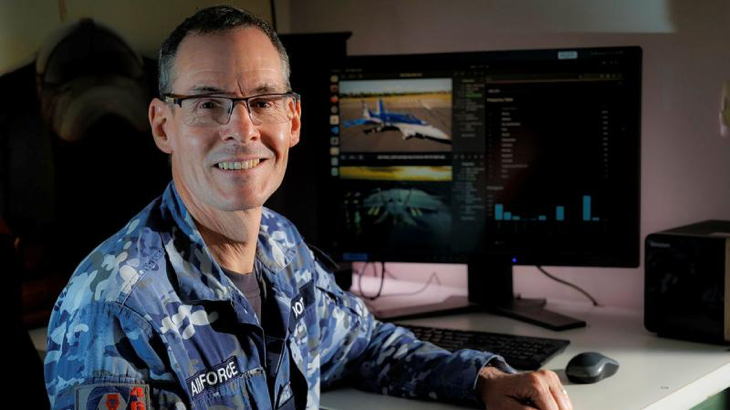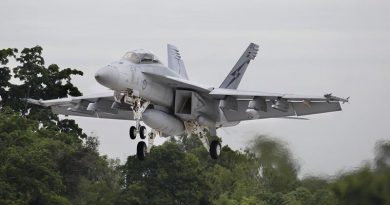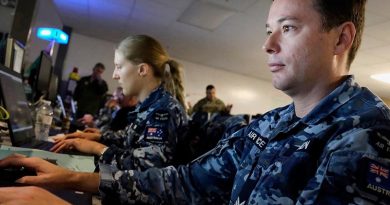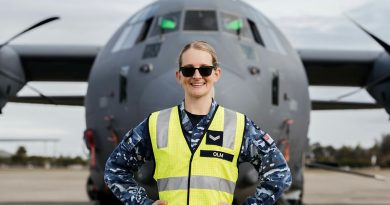Image specialist makes AI aircraft ID breakthrough
Share the post "Image specialist makes AI aircraft ID breakthrough"

Thanks to an image specialist’s out-of-the-box thinking, searching for pictures of aircraft could soon be a whole lot easier.
CAPTION: Air Force imagery specialist Flight Sergeant Michael Bott searches for aircraft using an algorithm that he helped produce while involved in the Edgy Air Force program. Story by Corporal Jacob Joseph. Photo by Sergeant Craig Barrett.
Flight Sergeant Michael Bott has been instrumental in developing an artificial intelligence algorithm that can identify and tag images of specific aircraft types from within a library of millions of images.
The idea came after an Edgy Air Force Tinker Thursday workshop, where aviators were asked to think about AI workplace applications.
“That’s when I had that lightbulb moment, how this would have made my life so much easier,” Flight Sergeant Bott said.
If an image lacked a detailed description, the only way to identify a Hornet from a Hercules was to review the images one-by-one and update them.
That’s what Flight Sergeant Bott did when he was asked to find images of the Classic Hornet for a special project to mark the jet’s retirement in 2021.
A search of the Defence image gallery for ‘Hornet’ returned more than 13,000 results.
Only 3000 featured the retired multi-role fighter.
“Since we’ve been taking digital photographs, we add metadata that says what’s in the photograph, what is happening, and why,” Flight Sergeant Bott said.
“In those early days the details were often generic or inaccurate, and that makes it hard to do specific searches today.”
Through Edgy Air Force, a design and engineer program where aviators get hands-on with tech to realise workplace innovations, Flight Sergeant Bott secured funding and a contractor to develop his algorithm.
He said algorithms already existed to identify aircraft in images, but it was a first for the Royal Australian Air Force to recognise military aircraft types.
“If I can throw 100,000 photographs at the algorithm and it narrows it down to 5000 photographs for review, that’s a 95 per cent improvement,” Flight Sergeant Bott said.
“For that reason the project was a win from the beginning – it immediately reduced the number of images a human needed to look at.”
Flight Sergeant Bott originally developed the technology so it could recognise and record aircraft.
He plans to use it to value-add to the immense image collection at the RAAF museum at Point Cook.
According to Edgy Air Force program Warrant Officer Lara Cluff, over the coming months a series of exposure and training courses will be held nationally to provide aviators with an opportunity to better understand design thinking and commence their own innovation journeys.
.
.

.
.
Share the post "Image specialist makes AI aircraft ID breakthrough"





